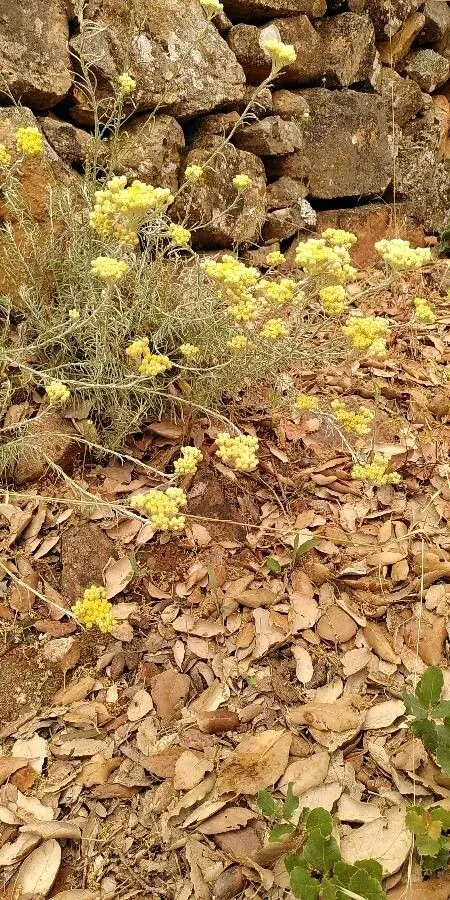
Author: (Labill.) Steetz
Bibliography: Pl. Preiss. 1(3): 474 (1845)
Year: 1845
Status: accepted
Rank: species
Genus: Chrysocephalum
Vegetable: False
Observations: SE. Australia
The Clustered Everlasting, scientifically known as Chrysocephalum semipapposum, is a distinctive and captivating member of the Asteraceae family. First documented in 1845 in Pl. Preiss. 1(3): 474 by (Labill.) Steetz, this perennial plant is native to southeastern Australia and has become synonymous with the region’s resilient and varied flora.
Characterized by its clusters of bright yellow or golden flower heads, the Clustered Everlasting brings a splash of color to the landscapes it inhabits. These flower clusters are tightly packed, giving rise to the common name “Clustered Everlasting.” The blooms are long-lasting, with each flower maintaining its vibrant appearance for extended periods, even when dried. This feature makes the plant a popular choice for dried flower arrangements and ornamental gardening.
The foliage of Chrysocephalum semipapposum is equally notable. The leaves are generally narrow, gray-green, and often covered in fine hairs, which can sparkle under sunlight. These hairs not only add to the plant’s visual appeal but also play an essential role in its adaptability to various environmental conditions, helping to reduce water loss and protect against herbivores.
The plant thrives in well-drained soils and is commonly found in open woodlands, grasslands, and rocky terrains. Its adaptability to different soil types and ability to withstand drought-like conditions highlight its resilience and importance within its native ecosystem. The Clustered Everlasting is important for local wildlife, providing nectar for insects and serving as a larval food source for some butterfly species.
Gardeners who wish to include this plant in their landscapes will find that it requires minimal maintenance. It prefers sunny locations and can be propagated through seeds or cuttings. Its drought tolerance makes it an excellent choice for xeriscaping, a landscaping philosophy that reduces the need for irrigation.
In summary, the Clustered Everlasting (Chrysocephalum semipapposum) is a visually stunning and ecologically significant plant native to southeastern Australia. Its striking yellow blooms, hardy foliage, and adaptability make it a valuable addition to natural and cultivated landscapes alike.
Eng: clustered everlasting, yellow-buttons
En: Clustered everlasting, Yellow-buttons
Taken Jun 2, 2022 by gallego real ines (cc-by-sa)
Taken Jul 8, 2022 by Reza Deghati (cc-by-sa)
Taken Sep 12, 2020 by Valerie Kagy (cc-by-sa)
Taken May 29, 2022 by barea antonio (cc-by-sa)
Taken Mar 18, 2022 by espoir foi (cc-by-sa)
Taken May 29, 2022 by barea antonio (cc-by-sa)
© copyright of the Board of Trustees of the Royal Botanic Gardens, Kew.
Family: Myrtaceae Author: (F.Muell.) K.D.Hill & L.A.S.Johnson Bibliography: Telopea 6: 402 (1995) Year: 1995 Status:…
Family: Rubiaceae Author: Pierre ex A.Froehner Bibliography: Notizbl. Bot. Gart. Berlin-Dahlem 1: 237 (1897) Year:…
Family: Sapindaceae Author: Koidz. Bibliography: J. Coll. Sci. Imp. Univ. Tokyo 32(1): 38 (1911) Year:…
Family: Asteraceae Author: A.Gray Bibliography: Pacif. Railr. Rep.: 107 (1857) Year: 1857 Status: accepted Rank:…
Family: Fabaceae Author: Medik. Bibliography: Vorles. Churpfälz. Phys.-Ökon. Ges. 2: 398 (1787) Year: 1787 Status:…
Family: Aspleniaceae Author: (Cav.) Alston Bibliography: Bull. Misc. Inform. Kew 1932: 309 (1932) Year: 1932…